I’m back with the second half of the Northwoods set from Replica Toy Fish. I looked at the other three species here, and now I’ll look at the other three, also three popular sport fish in more northern areas of North America (one of which is naturally found more broadly). The species today are all in the family Esocidae, the pikes: the muskellunge Esox masquinongy, the northern pike Esox lucius, and the tiger muskie Esox masquinongy x lucius (a hybrid of the northern pike and muskellunge).
Caribou (Wild Safari North American Wildlife by Safari Ltd.)

A few years ago, I reviewed the CollectA woodland caribou for the holiday season and since I’m a one-figure-per-species collector I thought I would be done with caribou aka reindeer after that. But here I am again with another figure of the same species, again for the holiday season. Why? Well, I got this idea in my head that for Rangifer tarandus I might want to collect some of its many subspecies.
Osprey (Wings of the World by Safari Ltd.)
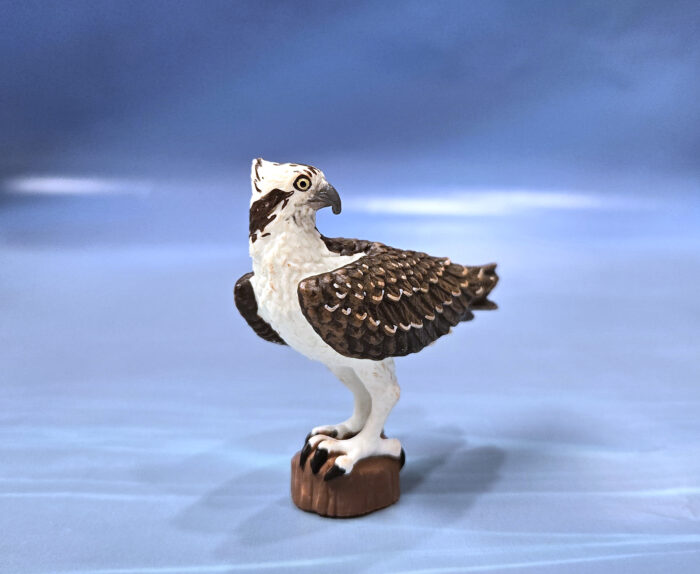
I do not engage in the ‘wishes and wants’ and ‘predictions’ threads on the forums. For one reason, I like to be surprised, and I find it more rewarding when something is announced that wasn’t expected. Secondly, is that many people’s wishes and wants tend to be really obscure things that have a low probability of getting produced, thus resulting in disappointment when official announcements are made.
Tiger Muskie (6 Inch Series by Replica Toy Fish)

And another six inch figure from Replica Toy Fish. This time it’s a hybrid species, the tiger muskellunge or tiger muskie, Esox lucius x masquinongy or Esox masquinongy x lucius (it depends on on which the male is, indicated first). The tiger muskie, as indicated by the species name, is a hybrid animal animal with northern pike and muskellunge parents, and are usually sterile.
Northern Pike (6 Inch Series by Replica Toy Fish)
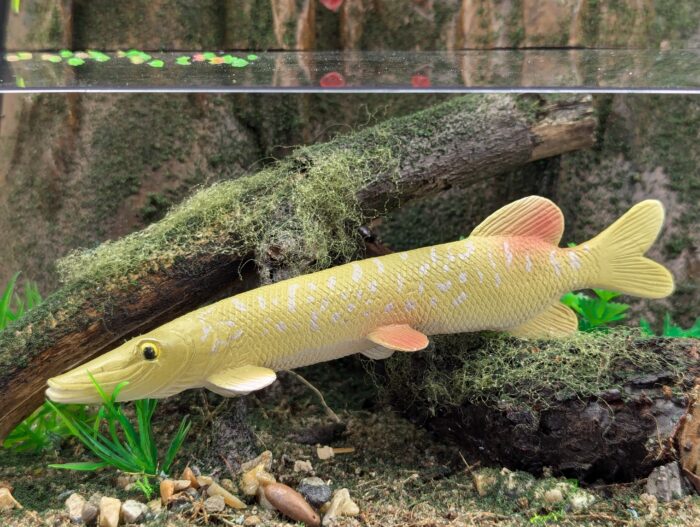
Back with another of the larger figures from Replica Toy Fish, this time the ‘six inch’ northern pike Esox lucius. This is a species that is familiar throughout a broad Holarctic range in cool waters across North America, Europe, and Russia, plus populations have been introduced in other areas as well.
Hermit Crab (Marine Animal Models by TNG)

Despite having the common name ‘crab’, hermit crabs are not ‘true’ crabs, meaning they are not a part of the clade Brachyura. They belong to its sister group, Anomura, which also contains porcelain crabs, squat lobsters, mole crabs, and king crabs. Broadly speaking, hermit crabs encompass the superfamily Paguroidea which includes the king crabs.
Killer Whale, 2018 (Wildlife Ocean by Schleich)

The world’s largest and most visually striking dolphin, one of its most intelligent animals, and undisputedly one of its most accomplished predators, the killer whale (Orcinus orca) needs no introduction from me. Whether they’re attacking boats or wearing dead salmon as hats the orca is constantly generating interest and is one of our most beloved and familiar animals.
Caiman (Wild Animals by Papo)
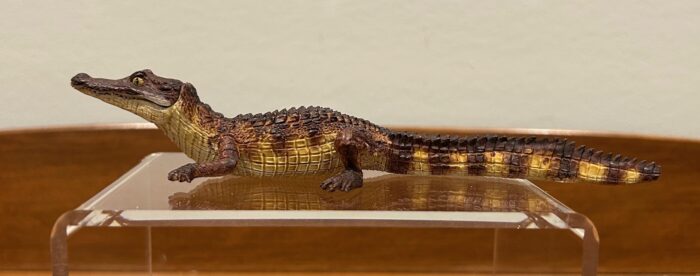
Review and images by Suspsy; edited by bmathison1972
Caimans are members of the alligator family that reside in Central and South America. There are presently six living species ranging in size from the 1.4 metre-long Cuvier’s dwarf caiman, which is the smallest living crocodilian, to the 5 metre-long black caiman, which is the largest member of Alligatoridae.
Smallmouth Bass, Brook Trout, Walleye (3 Inch Northwoods Fish Set Part 1 by Replica Toy Fish)
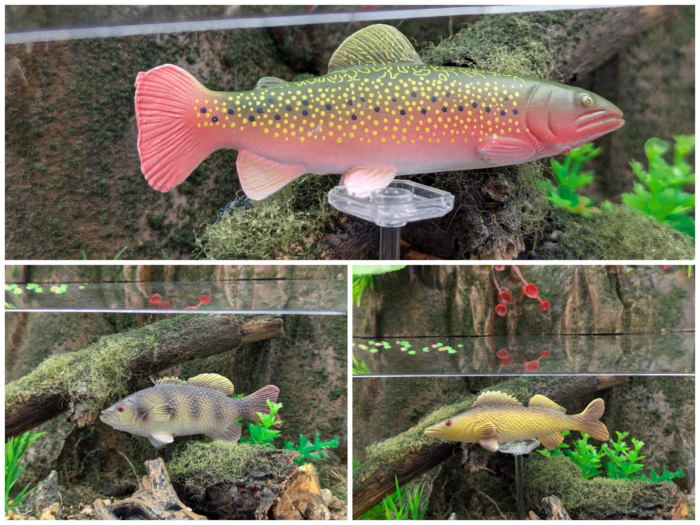
I’m back with another look at some Replica Toy Fish models. Last time was the 6″ channel catfish figure, this time I’ll be looking at one of the initial sets of three inch figures. There were two sets of six, but I will split them into two posts of three figures just to keep them a little shorter!
British Shorthair, 2024 (Farm World by Schleich)
Pilot Whale (Wild Safari Sealife by Safari Ltd.)

Pilot whales are members of the Delphinidae family that get their name from the unproven belief that a single member of the pod leads the rest and that they’ll follow that individual even if it means certain death, which is supposed to explain why pilot whales strand en mass. Indeed, pilot whales are among the most likely cetacean species to become stranded.
Giant Anteater (Wild Rush 02 by Kaiyodo)
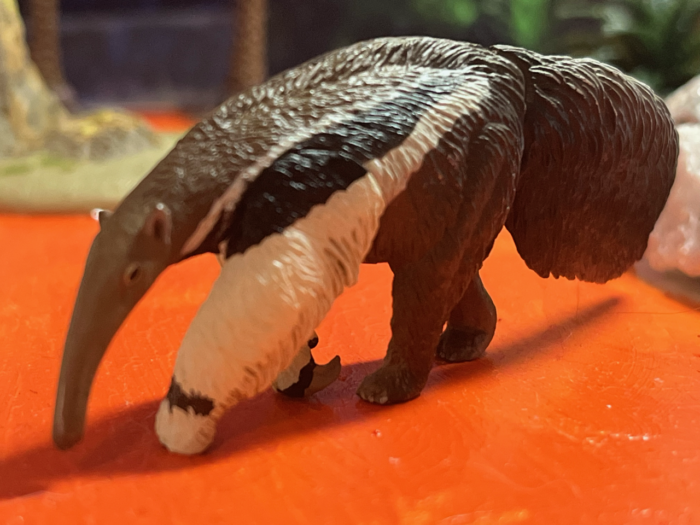
Review and images by Sam; edited by bmathison1972
The giant anteater (Myrmecophaga tridactyla) is an animal of unusual proportions. These insectivorous mammals are native to the tropical rainforests and grasslands of Central and South America, and in Brazil, they are known as tamanduá-bandeira, which translates to “flag anteater,” a reference to their big, fanlike tail.





